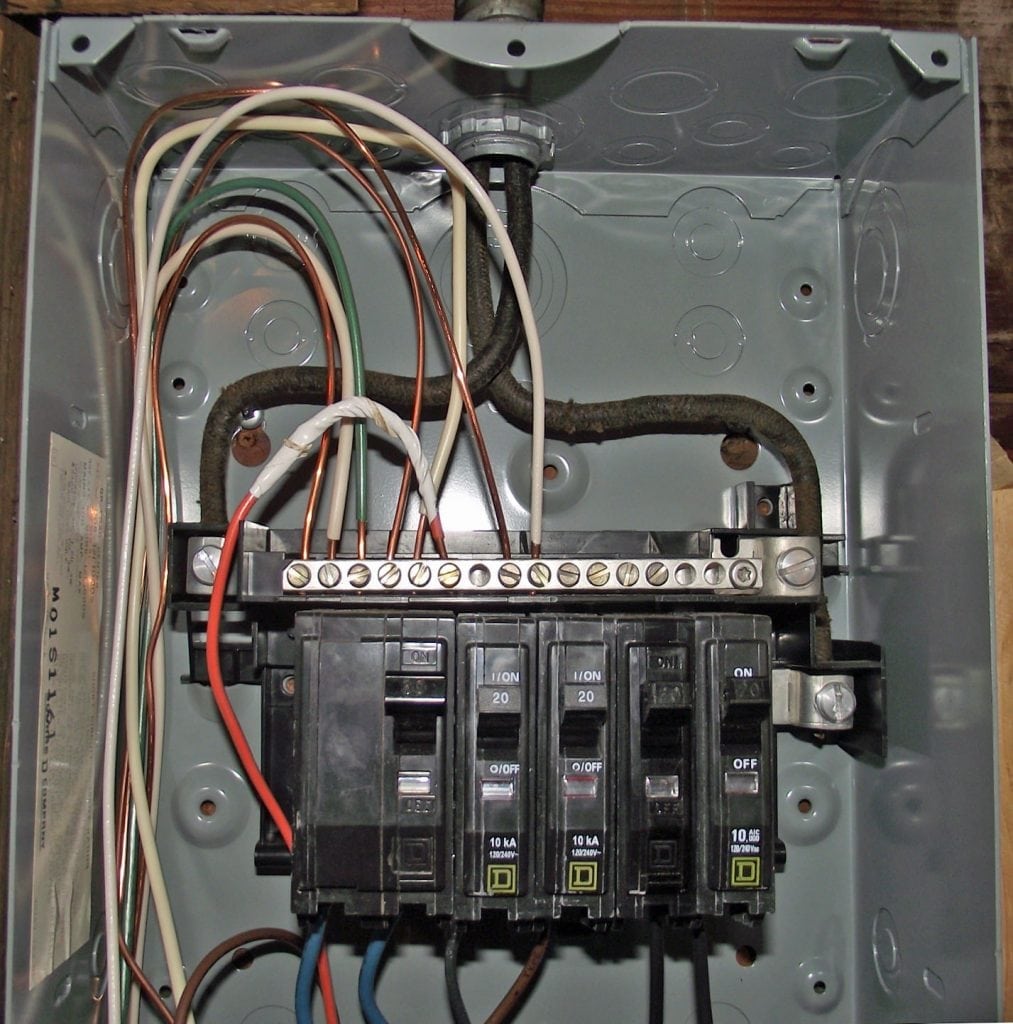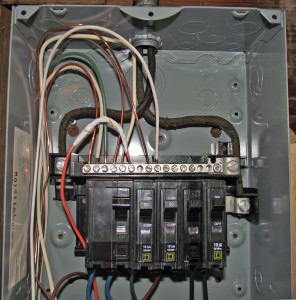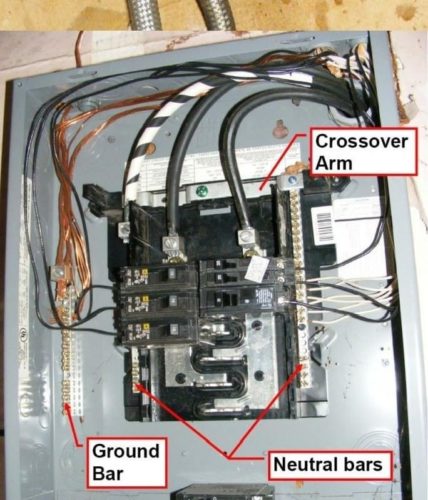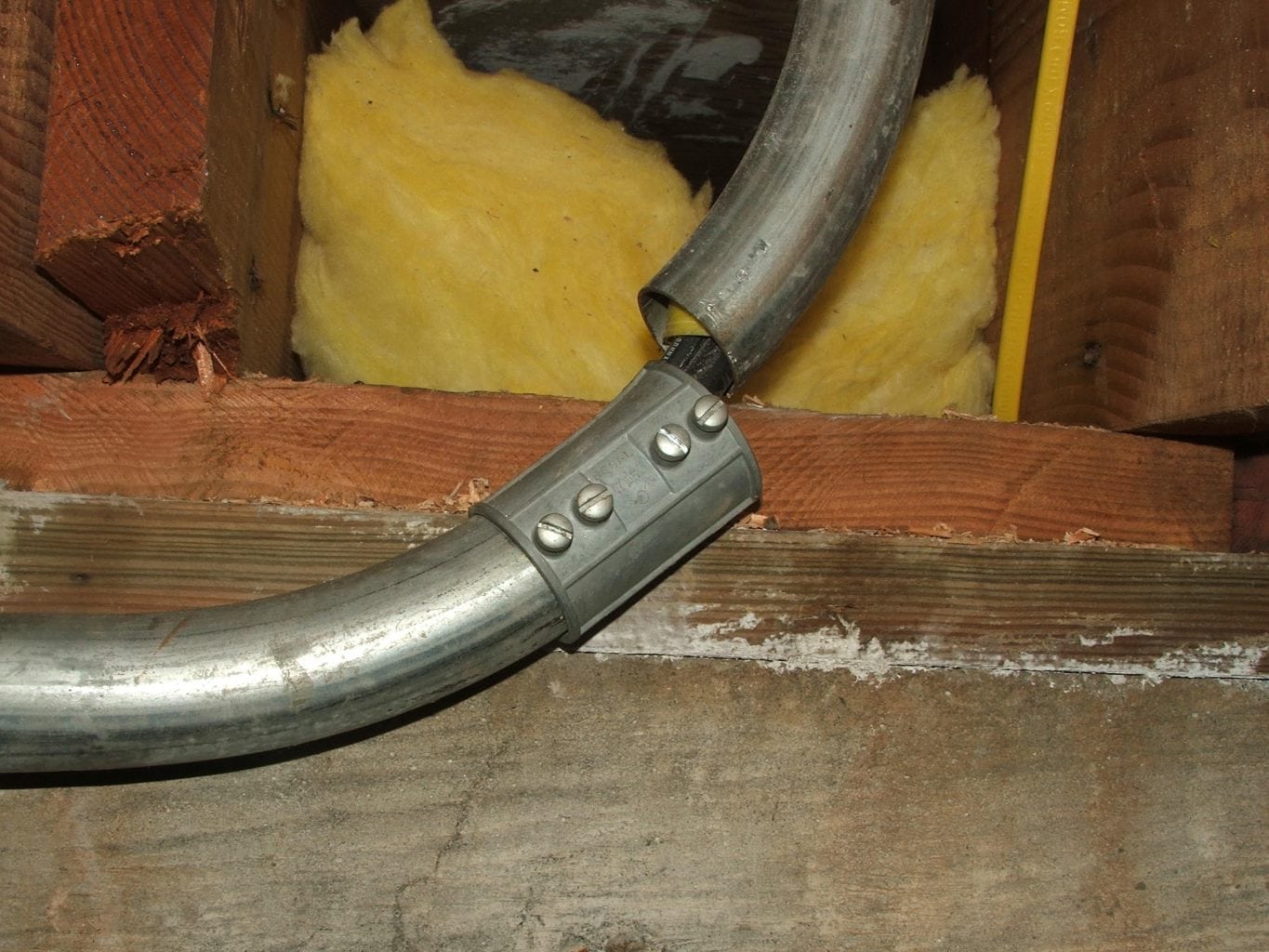
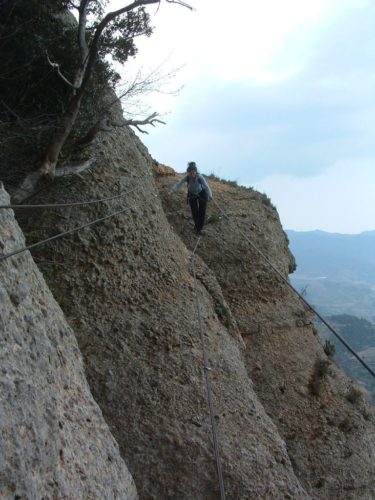
One of the most common defects I find related to remote distribution panels (sub-panels) is ground wires and neutral wires bonded together.
This is especially true if the work has been done by homeowners or handy persons.
In simple terms, the only place we want to bond the grounds and neutrals together is in the service equipment. Many people refer to it as the “main panel” or a variety of other terms.
Regardless of what you may improperly call it, the point where you can disconnect all power to the building is the service equipment. At this point, the ground and neutral are connected to the earth through a system of pipes, rebar, rods, and or wires. The purpose of connecting the system to earth has little to do with the function of the electrical system. This provides a layer of protection against lightning surges or static charges that would otherwise build up on the electrical system.
It is a bit like the spark you get from nose to nose when static charges build up on you and the person with the other nose. This happens because you have no means of sending that excess energy to the earth.
The second important function of all those ground wires running in all the circuits throughout the home is to provide an emergency path back to where they are connected together in the service equipment. In this way, if there is a short between the energized conductors and some metal component that is grounded, there will be a path back to the point of connection to trip the breaker associated with that circuit.
Circuit breakers trip on heat curves and amperage curves and a short circuit represents many times the amperage rating of the breaker tripping it instantly. Likewise if there is a problem with the circuit that is resulting in over-amperage, the breaker will trip within the time curve of the breaker–not necessarily exactly the rating of the breaker. A 20 amp breaker could actually not trip for a few amps above 20 amps for X amount of time without tripping. Depending on the appliance, the appliance might finish its job before the breaker trips and we would never know it is misbehaving.
But lets get back to not connecting grounds and neutrals together in sub-panels. Installing the green screw in this sub-panel has resulted in connecting the grounds and neutrals together. It needs to be removed.
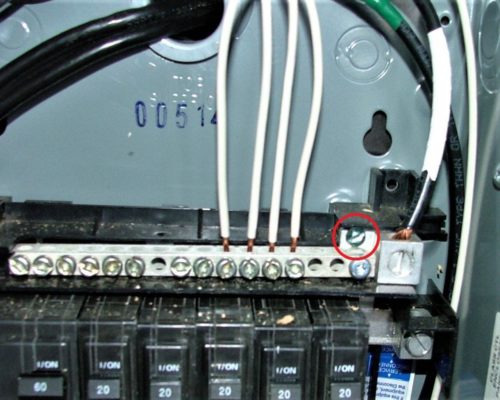
When we do bond them together we create two paths back to the connection at the service equipment. The amount of current that will flow on the two paths will be proportional to the resistance of those paths. For example if metal conduit or a very large wire is used as the equipment grounding conductor from the sub-panel to the service equipment a large percentage of the neutral current could flow on the bare conduit or bare ground wire (or coated ground wire as the case may be) back to the service equipment. In some cases the metal conduit might be a proportionally better path than the neutral wire feeding the sub-panel and the majority of the neutral current could then flow on the bare conduit.
I consider it best practice to always provide a ground wire inside metal conduit but there are probably millions of installations that rely on the metal conduit as the path back to the service equipment. As long as neutrals and grounds are not bonded together in the sub-panel this is rarely an issue.
Now if grounds and neutrals are joined together in the sub-panel, the current of all the 120 volt circuits that are operating will travel on the metal conduit, and the neutral wire, as well as the ground wire if present. This is multiple paths.
So in the following picture where there is no ground wire inside the conduit, but instead the only path back to the service equipment, is the metal conduit, its being disconnected is a serious problem for fire safety and ability of the breakers to trip if there is a fault to ground. The receptacles of the circuits in this sub-panel tested as ungrounded,. Fortunately, in this case, the neutrals and grounds were properly isolated, so there was little risk of neutral current running on the bare conduit.
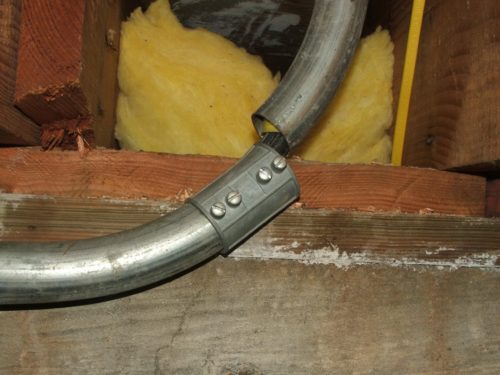
If they are bonded together in the sub-panel, who is going to be brave enough to grab the two ends of the pipe and stick them back together?
A competent electrician will know enough to test the metal components and/or make sure electrical circuits are turned off, but what about the handyman? What about your Honey that works on your Honey Do list? Most people would be unaware of the dangers present and working with the exposed metal components with bare hands could be deadly.
Here is a video demonstration done with students at Bellingham Technical College to show the effect on different size “paths” in a simulation of grounds and neutrals connected together at a sub-panel. The “light” is the load symbolizing the sub-panel.
A big thanks to Gary Smith for his improvements to this video.
Here is a picture of the wiring diagram for the demonstration in the video:

Charles Buell Real Estate Inspections in Seattle
